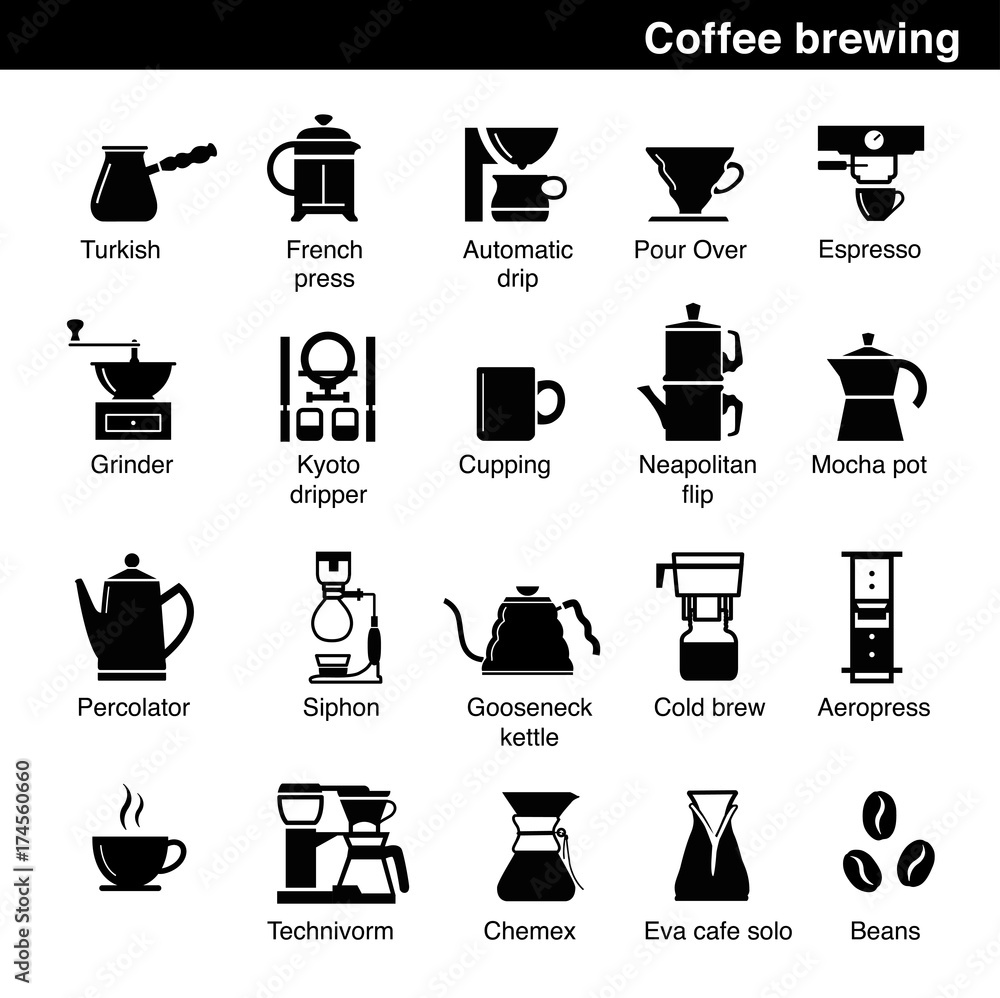The Effect of Different Coffee Brewing Methods on Flavor and Aroma
The Effect of Different Coffee Brewing Methods on Flavor and Aroma
Blog Article
Checking Out the Art of Coffee Developing: A Comprehensive Guide to Developing Your Cup
The art of coffee brewing is a complex technique that merges science with individual expression, where the option of beans, water quality, and brewing methods merge to develop a polished sensory experience. Comprehending the nuances of various coffee beans, especially the distinctions between Arabica and Robusta, is vital for any connoisseur. Additionally, the option of ideal devices and meticulous focus to developing parameters can substantially influence the last result. As we check out these components, one must consider exactly how even minor modifications can result in profound adjustments in flavor and fragrance-- what might these changes disclose regarding your suitable cup?
Comprehending Coffee Beans
To genuinely value the art of coffee brewing, one must first understand the foundational component: coffee beans. These little seeds, generally stemmed from the Coffea plant, are critical in figuring out the taste account, aroma, and general top quality of the made beverage. Coffee beans largely fall right into two categories: Arabica and Robusta. Arabica beans, understood for their fragile tastes and higher level of acidity, are often favored by lovers. In contrast, Robusta beans possess a more powerful, extra bitter taste and greater caffeine material, making them appropriate for coffee blends.

Additionally, the handling approach-- whether cleaned, natural, or honey-- impacts the beans' final taste. Recognizing these aspects permits brewers to select the right beans that straighten with their preferred flavor account, ultimately boosting the coffee brewing experience. coffee brewing methods. This understanding is important for any individual aspiring to grasp the craft of making the perfect cup of coffee
Developing Methods Discussed
Numerous lovers discover that the selection of developing technique significantly impacts the last flavor and aroma of their coffee. Each method utilizes various removal methods, affecting the coffee's character and splendor.
Drip developing, among one of the most preferred techniques, utilizes an equipment to drip warm water through ground coffee, generating a consistent and tidy mug. French press, on the various other hand, immerses coffee grounds in warm water, enabling a fuller body and even more robust flavor, as oils and fine particles stay in the mixture.
Pour-over developing uses a precise strategy, where water is by hand put over coffee grounds, permitting specific control over extraction time and temperature, leading to a intense and nuanced cup.
Coffee, a focused coffee made under pressure, is known for its solid taste and velvety texture, functioning as the base for different coffee beverages, consisting of lattes and coffees.
Important Tools Needed
What tools is crucial for brewing a wonderful mug of coffee? The structure of any type of effective coffee developing process exists in high quality devices tailored to your favored technique. A reputable coffee grinder is essential; fresh ground beans substantially boost flavor and aroma. Select a burr grinder, which guarantees consistent bit size, crucial for optimal removal.
Following, consider your brewing gadget. Choices range from drip coffee makers and pour-over configurations to French presses and coffee machines. Each approach uses distinct flavor profiles and brewing methods, so choose one that straightens with your taste preferences.
An accurate scale is additionally invaluable, allowing you to measure coffee and water precisely, which is important for uniformity. Furthermore, a thermometer can help keep track of water temperature, as it directly affects extraction top quality.
Mastering Water High Quality
The high quality of water made use of in brewing coffee plays a considerable duty in establishing the last flavor account of the cup. Different aspects add to water top quality, including mineral web content, pH degree, and overall purity. Ideally, water ought to be devoid of contaminants and impurities, as these can adversely influence the preference of coffee.
Minerals, such as calcium and magnesium, enhance the extraction of tastes from the coffee grounds, while preserving a well balanced pH degree-- around 6.5 to 7.5-- is necessary for optimum removal. Water that is too soft may bring about under-extraction, leading to weak or sour tastes, while extremely hard water can produce a bitter or harsh cup.
For the finest outcomes, filtered water is advised, as it minimizes the presence of chlorine and other unfavorable compounds typically found in faucet water. Furthermore, think about using water with a Total Dissolved Solids (TDS) degree between 150-200 ppm, which is generally optimal for coffee brewing. By grasping water high quality, you can lay a solid structure for attaining a consistently superb mug of coffee, enabling the distinct attributes of your why not find out more selected beans to beam through.

Tips for Taste Improvement
Enhancing the flavor of your coffee can considerably elevate your brewing experience and bring out the distinct subtleties of your chosen beans. To attain this, consider numerous key aspects that influence preference.
Firstly, the grind dimension plays an important duty. A finer grind increases removal, causing bolder flavors, while a coarser grind yields a milder cup. coffee brewing methods. Adjust your work according to your brewing approach to attain optimal outcomes
Second of all, experiment with mixture time. Over-extraction can cause resentment, while under-extraction cause a sour taste. Go for investigate this site a mixture time that balances these extremes, generally between 2 to four minutes, depending on your approach.
Brewing with water that is too hot can blister the coffee, while water that is as well trendy may stop working to draw out ample taste. In conclusion, the art of coffee developing is a complex method that calls for a deep understanding of different aspects, including bean option, developing approaches, and water top quality. By incorporating these components, coffee fanatics can raise their developing techniques, resulting in a mug that not just pleases personal choices however also showcases the abundant intricacy of coffee flavors.
The art of coffee brewing is a multifaceted technique that combines science with personal expression, where the selection of beans, water quality, and brewing approaches merge to create a refined sensory experience.To absolutely appreciate the art of coffee brewing, one need to initially comprehend the fundamental aspect: coffee beans. Developing with water that is too warm can blister the coffee, while site here water that is also trendy might stop working to extract adequate taste. In conclusion, the art of coffee brewing is a complex practice that calls for a deep understanding of numerous elements, including bean choice, developing methods, and water top quality. By incorporating these elements, coffee lovers can raise their developing strategies, resulting in a mug that not only satisfies individual preferences however additionally showcases the rich intricacy of coffee flavors.
Report this page